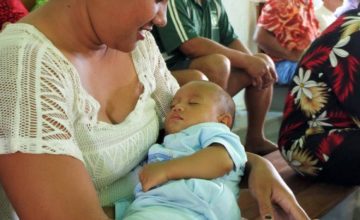by Jessica Sutterlict, MPH, former Dissemination Specialist with Programmatic Assistance for Tribal Home Visiting Resource Institute for Excellence (THRIVE), formerly PATH, ZERO TO THREE
Many organizations today are recognizing the importance of integrating diverse cultures within their organization, and must, therefore, consider the many facets and complexities involved. In this article I am sharing personal reflections, from a tribal perspective, about cultural sensitivity in organizations. This reflection does not incorporate all views of the entire tribal population but speaks to my personal experiences as a Native American woman who has worked for many nontribal organizations.
It is difficult to holistically summarize how organizations can foster cultural sensitivity to recruit, engage, and retain tribal employees or serve tribal populations. Each organization is unique and diverse in its culture. Therefore, the approaches and solutions should be tailored to meet the unique needs of each organization. Three areas I am asking you to consider and reflect upon include; Resiliency, Policies, and Workforce Development.
Resiliency
Organizations need to understand tribal resiliency within a historical context when employing, or serving tribal populations. Research has shown that intergenerational and historical trauma continually impact tribal populations. Surviving historical trauma and participating in intergenerational trauma takes tremendous strength and resiliency. Understanding the true impact of historical trauma is imperative to leaning in and valuing the inherent strength that tribal people offer. Due to the vast amount of emerging research and resources, trainings led by Native-focused organizations are available. As trust builds, each person may begin to share their insights, which will have an impact for any person sitting at the table. This is especially true when decisions are being made about tribal populations.
Next step: Assess how your organization provides resources which nurture resiliency for tribal people, and provide education and growth for those who are working alongside them.
A question for discussion: How can your organization provide training opportunities for staff to strengthen the understanding of history, culture, and resiliency of diverse populations?
Resource: Intergenerational Trauma: Understanding Natives’ Inherited Pain
Policies
Bereavement and traditional leave are two examples of policies to consider examining to meet the needs of tribal employees and their families. These two policies, along with many others, are commonly different within tribal organizations. Native families are dynamic and those considered immediate family members do not always align with the western definition of immediate family. For example an aunt or uncle may be like a mother or father. A cousin can be similar to a brother or sister.
Also, strengthening cultural sensitivity within an organization requires policies that will allow tribal employees to stay involved in cultural practices and ceremonies. Cultural practices and ceremonies are continual and are often connected to the land and seasons. Participation in ceremonies can take days or weeks, instead of just one day a week or on the weekend conveniently outside of the standard work week. Ceremonies are often connected to place and time and require people to gather foods, attend seasonal ceremonies, and travel long distances. In today’s workplace, employees must often choose what cultural practices and ceremonies will fit into their work schedules. Making choices between culture and work enforces the assimilation process of tribal peoples. Most tribal organizations honor the importance of revitalization and maintenance of culture and ceremonies and allow their employees to practice these ways as part of their work.
Next step: Assess your organizational leave policies to determine if they meet the needs of a diverse workforce within your organization.
A question for discussion: What policy development approach can you use to meet the needs of the organization while not practicing assimilation of tribal people?
Resource: Native Americans At-A-Glance Diversity Best Practices
Workforce Development
Providing a safe space for your team to build cross-cultural communication, gain respect for each other, and reflect on the diverse perspectives will contribute to an enlightening, uncomfortable, and critical exercise. True voices must be heard in an honest way, which will lead to employee empowerment. These practices can assist in building trust and moving an organization away from oppressive practices that would otherwise ignore or deny the voices of tribal people. The life perspective gained as a tribal person is a primary skill which comes at an unimaginable price due to the resiliency needed to overcome many life obstacles. The perspective is not just a great “add.” Consider respecting tribal life experiences, perspectives, and voices as a valued primary skill.
Next step: Assess how your organization provides a safe structure or process that allows thought-provoking cross-cultural communication and education.
A question for discussion: Does the culture of your organization truly value diverse perspectives as a primary skillset and provide a structure that allows cross-cultural communication?
Resource: Re-Imagining & Humanizing Native Peoples: Matika Wilbur
Changing the organizational culture, atmosphere, and policies that will truly incorporate and value life experiences, culture, and resiliency can advance organizational cultural sensitivity overall. This advancement should naturally lead to retaining a diverse workforce, including tribal employees, which will result in a more effective and relevant organization.




